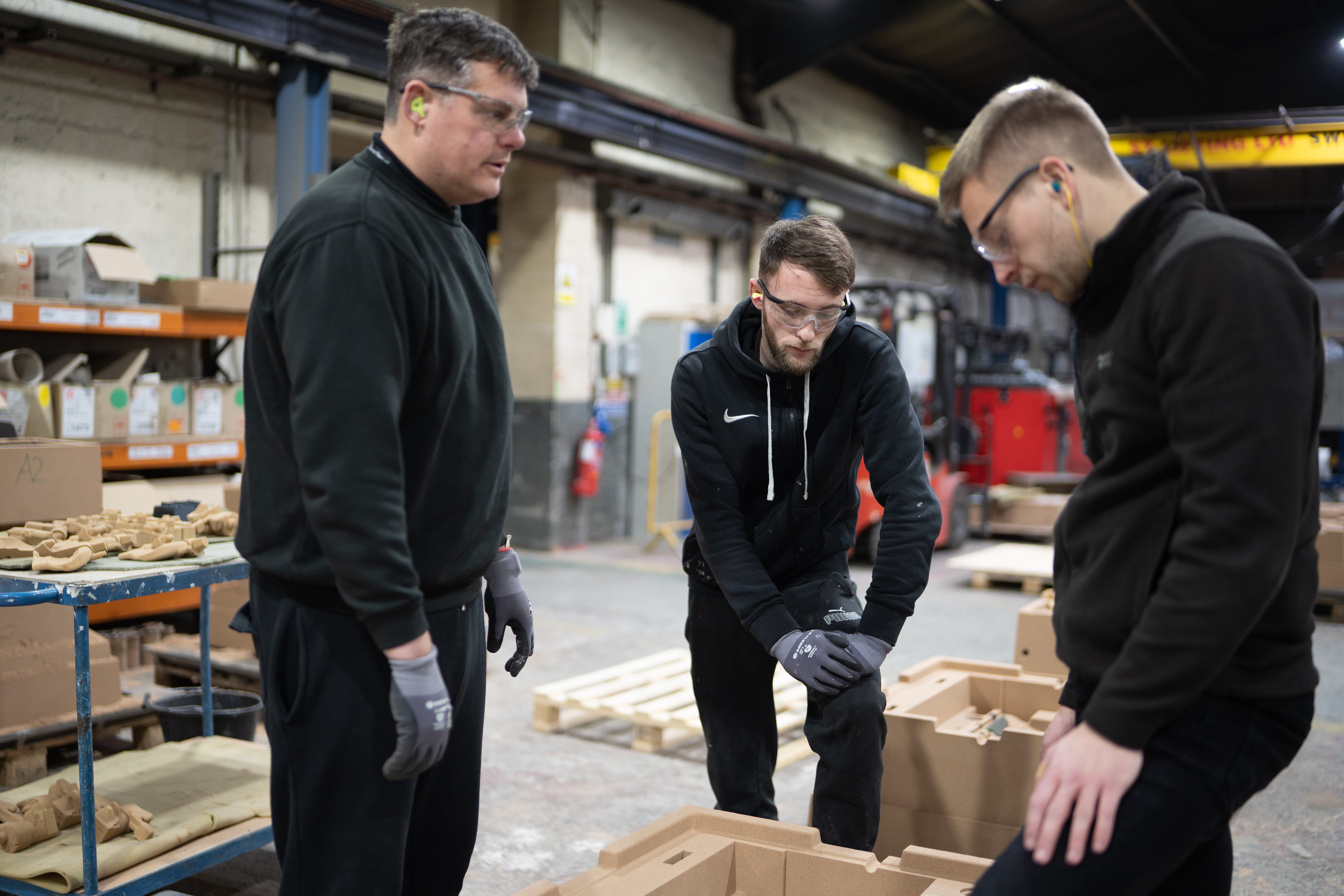Giga casting is transforming the automotive industry. Significant investment by Tesla has developed the giga casting process – allowing automotive manufacturers to create large cast parts in a single piece. This is driving huge change across the industry, with further implications across other manufacturing sectors.
While Telsla has been at the forefront of this change, investment from other car makers is also critical. For example, Volvo has announced their plan to switch to aluminium giga casting for rear body structures for new EV platforms beginning in 2025.

What are the benefits of giga casting?
The development of the giga casting process has many benefits, for both automotive manufacturers and consumers.
These benefits include:
- Reduced complexity for reduced costs. While the Tesla Model 3 required over 170 different pieces of sheet metal and over 1600 welds, the Model Y replaces these parts with just a front and rear giga casting. This reduced complexity introduces huge costs savings, both for manufacturers and ultimately, consumers.
- Lightweighting. The part count reduction as a result of casting a large, single piece allows cars to be manufactured that are lighter. Lighter vehicles are essential in increasing sustainability through reduced material usage, fuel required and C02 emissions. This makes manufacturing more sustainable, as well as increasing the potential range for electric vehicles from a single charge – vital for increasing consumer uptake of EVs.
- Increased flexibility. The part count reduction allows increased flexibility in certain aspects of vehicle platform engineering, as well as potential flexibility across supply chains.
- Giga casting offers new approaches to car body construction. This is particularly significant for EV car batteries, where the battery tray is a new core part requiring integration. Giga casting can provide solutions for these engineering challenges.
- Consistent accuracy. Unlike welded structures which can have tolerance differences, the die-cast giga cast parts are dimensionally accurate each time. This improves the quality and tolerance accuracy of the final part.
What will be the impact of giga casting on the automotive industry?
As well as increasing sustainability and efficiencies and reducing costs, giga casting has created the opportunity for a fundamental paradigm shift in automotive manufacturing. This shift is giving automotive manufacturers the opportunity to rethink traditional supply chains and production.
Of course, there are significant challenges with the giga casting process. These include the investment costs required, the huge space needed for manufacturing, and engineering challenges such as achieving the correct wall thickness, alloy selection and potential engineering limitations in mono cast parts.
You can read more here: Giga Casting: What are the Pros and Cons for the Automotive Industry? (gwcast.com)
Will Mega Casting Influence Non-Automotive Industries?
Manufacturing industries as a whole are being pressured to increase sustainability, solve complex problems and become more efficient. The success, and potential of giga casting in the automotive industry is likely to have potential across other heavy industries such as x, x and x. Incorporating large, single piece castings can increase engineering flexibility while providing cost efficiencies, contributing to the huge paradigm shift created by giga casting.
Watch more: Will Mega Casting Influence Non-Automotive Industries?
Conclusion
Giga casting offers significant opportunities in automotive manufacturing, as well as across other manufacturing industries. It’s creating a paradigm shift, and while there are still significant challenges with the process, the impacts will be seen across supply chains, manufacturers and the final consumer product.
As sustainability continues to drive focus and future planning, giga casting is likely to become a key process; and engineers, manufacturers and foundries should be prepared for this shift.
To find out more about giga casting, and the role of sand casting in the process, download our free eBook 'Prototyping Giga Castings with Sand Casting'.


 Get in touch
Get in touch

